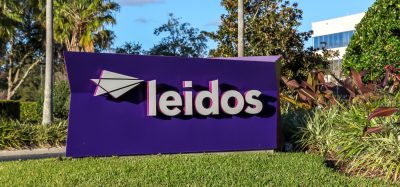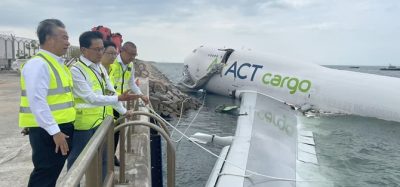Taking precision landing to the next level
Posted: 12 April 2016 | Florian Guillermet (SESAR Joint Undertaking) | No comments yet
For more than 50 years airports around Europe have relied on instrument landing systems (ILS) to provide pilots with approach and landing guidance in low visibility conditions, such as heavy rain and low cloud. Although the system has proved to be reliable and functional, ILS is costly to maintain and has operational limitations that reduce runway capacity in certain conditions. Florian Guillermet, Executive Director of the SESAR Joint Undertaking, presents the SESAR research and innovation on ground-based augmentation of satellite navigation systems (GBAS), showing how it can serve to improve airport resilience and capacity, as well as the predictability of arriving traffic.


Operational since the 1960s, ILS enables aircraft to land even when the pilots are unable to establish visual contact with the runway. The system consists of two antennae which transmit signals to receivers in the aircraft – a glide path tower located next to the runway at one end and a localiser antenna at the other end. These antennae provide the pilot with vertical and horizontal guidance when landing in low visibility. While ILS has served airports well until now, it has some shortcomings. The most significant drawback is that its signal is easily affected by interference from buildings, terrain and the wake vortex of taxiing aircraft near the runway, all of which results in the need to increase the separation between aircraft thereby lowering runway capacity. Advanced satellite navigation systems like GBAS can overcome these limitations, offering the same level of safety as ILS. It can also enable more advanced approach and landing procedures, thereby improving runway capacity and avoiding delays for passengers.
GBAS as an alternative to ILS
The idea of GBAS as an alternative to ILS was first mooted in the 1990s by the International Civil Aviation Organization (ICAO) and industry, in recognition of the need to augment satellite signals to enable more precise and safer landings – and GBAS does just that. The system uses four or more global navigation satellite system (GNSS) reference receivers and a VHF broadcast transmitter. Its ground systems receive positioning data from GNSS satellites, and compute error corrections based on signal quality and known fixed positions of the GNSS reference receivers. This in turn is broadcast to all GNSS landing system (GLS)-equipped aircraft within range. The system produces digitally-coded broadcasts which are then loaded into the aircraft’s navigation and guidance capabilities, allowing it to land automatically in low visibility conditions.
The real added value of GBAS
Since GBAS digital broadcasts do not need to be protected in the same way as ILS signals, there are fewer constraints near the runway allowing for reduced separation for aircraft and as a result greater runway throughput. But the real added value of GBAS is its ability to allow for more flexible precision approach and landing, providing benefits in terms of runway throughput (e.g. increased glide slopes or displaced threshold), environment and safety. GBAS is also a cost-effective alternative to ILS. Whereas ILS requires a system per runway end, GBAS needs only one single station to serve a multiple runway airport. In fact GBAS can provide 26 or more separate approaches across an airport within a given distance. As result maintenance costs are also lower.
For nearly a decade, the SESAR ATM community has been working on the development of GBAS technology, with systems already deployed at airports around the world. Combined with this, most modern aircraft rolling off production lines today now feature GLS equipage, the avionics required for GBAS-controlled landings, either as an option or as standard. These advances in airborne and ground station technology have allowed busy airports to deploy GBAS for CAT I approaches.
SESAR members are developing additional GBAS applications
Building on this work, SESAR members are developing additional GBAS applications enabling advanced approach procedures and more efficient flight trajectories. These procedures include the development of increased glide slopes and displaced thresholds approaches to allow increased runway throughput while reducing wake vortex and noise impact. Another application that SESAR is validating is the possibility for aircraft to fly more flexible approaches (such as curved approaches) to avoid flying over densely-populated areas thereby reducing again the noise impact near airports.
Another primary focus of SESAR R&D has been in designing and validating the systems and procedures for the use of GBAS in low visibility conditions allowing CAT II/III minima. The aim of CAT II/III is to provide a level of safety when landing in low visibility conditions, equivalent to that of ‘normal’ operating conditions. CAT I on the other hand requires a minimum decision height of 200ft, the level to which GBAS is certified today. In September 2013, SESAR reached a major milestone – a first CAT III approach enabled solely by GBAS. SESAR members used the data gathered to support baseline ICAO standards and recommended practices (SARPs) validation. In 2014, SESAR members embarked on the next round of validation flights, testing a CAT II/III avionics receiver prototype with ground stations at Frankfurt and Toulouse. Over 90 flights were completed using a mix of satellite guidance and autopilot, focusing on further data collection with the aircraft airborne receiver and ground stations in the final stages of prototype development for ICAO SARPs validation.
Results of the SESAR validations
The results of the SESAR validations show that the GBAS CAT II/III can overcome challenges posed by low visibility conditions, reducing runway blocking times and thereby increasing arrival capacity (by between two and six aircraft per hour) compared to ILS. Ultimately this means that airports are increasingly resilient to bad weather conditions and passengers can enjoy delay-free travel. The SESAR teams have also validated the operational, human safety and interoperability requirements as well as the regulatory and standardisation work needed to deploy GBAS in any European airport. These requirements are developed by experts in the fields of operations, safety and standardisation, which enables SESAR to deliver a solution with the elements to support its deployment.
The SESAR GBAS CAT II/III solution is gradually becoming available for implementation preparation and work is underway in collaboration with EASA to ensure regulatory certification. The results of this R&D has also been fed into ICAO as input to define a GBAS approach service type D (GAST D) standard and coordination has been conducted with the FAA to ensure alignment between SESAR and the NextGen programme. The overall objective is to make the solution ready for its deployment by 2019. The R&D work will continue on the use of multiple GNSS constellations, including Galileo, to improve the quality and reliability of the GBAS signal and on advanced GBAS procedures. This work is further supported by the Augmented Approaches to Land (AAL) project, a large-scale demonstration project that is looking at the application of the solution in all sizes of airports and for all categories of airspace users. With this work on GBAS, SESAR is providing a much-needed alternative to ILS and the means for European airports to increase the efficiency of their operations as well as the capacity of their runways, safely and sustainably.


Stay Connected with International Airport Review — Subscribe for Free!
Get exclusive access to the latest airport and aviation industry insights from International Airport Review — tailored to your interests.
✅ Expert-Led Webinars – Gain insights from global aviation leaders
✅ Weekly News & Reports – Airport innovation, thought leadership, and industry trends
✅ Exclusive Industry Insights – Discover cutting-edge technologies shaping the future of air travel
✅ International Airport Summit – Join our flagship event to network with industry leaders and explore the latest advancements
Choose the updates that matter most to you.
Sign up now to stay informed, inspired, and connected — all for free!
Thank you for being part of our aviation community. Let’s keep shaping the future of airports together!
Issue
Related topics
Air traffic control/management (ATC/ATM), Airside operations


















